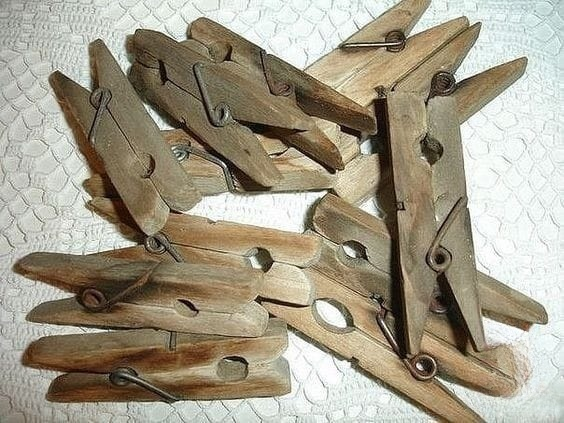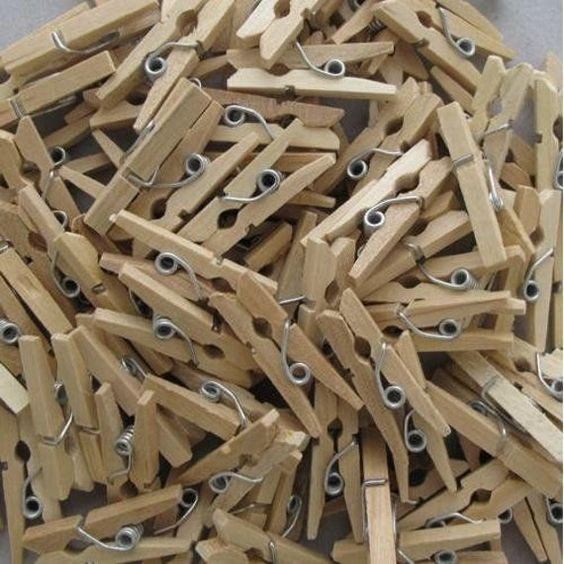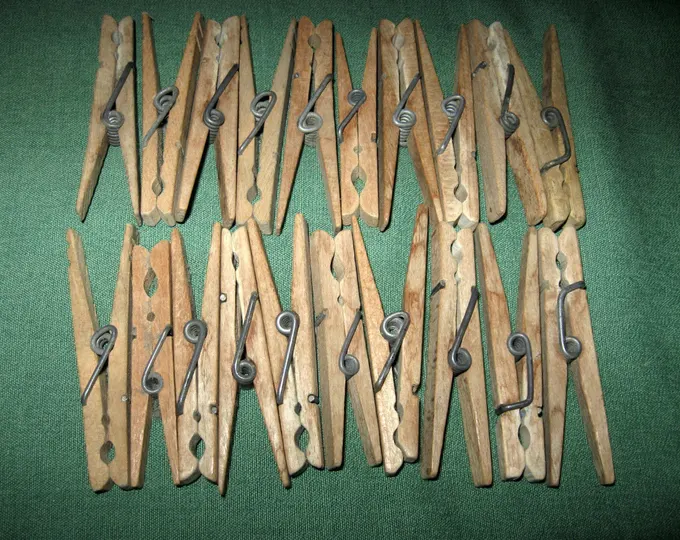The clothespin, also known as a clothes peg in some parts of the world, is one of the simplest yet most versatile tools ever created. While it might seem ordinary, this small object has a rich history, evolving from a laundry essential to an art medium. Invented in its modern form by David M. Smith in 1853, the clothespin has not only transformed how we hang laundry but also left its mark on American culture and beyond. In this article, we explore the history, evolution, and surprising versatility of the humble clothespin.
The Birth of the Modern Clothespin: David M. Smith’s 1853 Invention

In 1853, David M. Smith of Vermont revolutionized the way we dry clothes. Before Smith’s invention, laundry was hung out to dry using makeshift methods like tying clothes with ropes or draping them over bushes. Smith changed this with the creation of the spring-loaded two-piece clothespin. This new design featured two wooden pieces joined by a small metal spring, providing a secure grip that could hold wet clothes on a line, even in windy conditions.
Smith’s innovation quickly became a household staple, making laundry day easier and more efficient for families around the world. The spring-loaded clothespin set a new standard for functionality, making it a foundational tool in households everywhere.
Solon E. Moore’s 1887 Enhancement: The Coiled Fulcrum
In 1887, Solon E. Moore further improved Smith’s design with the introduction of the coiled fulcrum. Unlike Smith’s initial version, Moore’s design used a single-wire spring that offered better tension and grip while holding the wooden pieces together. This made the clothespin more efficient, affordable, and easier to produce on a larger scale.
This upgraded version propelled the clothespin industry forward, turning Vermont into the “Silicon Valley of Clothespin Manufacturing.” The United States Clothespin Company mass-produced Moore’s improved design, solidifying the clothespin’s place as an indispensable item in American homes.
The Shift from Wood to Plastic: A New Era for Clothespins
While the original clothespins were made of wood, the 20th century brought about a shift toward plastic. Plastic clothespins were more durable, weather-resistant, and offered more variety in color and design, making them appealing to consumers. The switch to plastic also aligned with the growing demand for affordable, long-lasting household items.
Despite the dominance of plastic, wooden clothespins remain popular for their rustic aesthetic and eco-friendly appeal. While modern materials have made clothespins more versatile, the charm of wooden pegs continues to attract eco-conscious users who value sustainability and tradition.
Beyond Laundry: Surprising Uses for Clothespins
The primary purpose of the clothespin is to secure laundry to a clothesline, but it has proven to be a surprisingly multifunctional tool. Here are some of its unexpected uses:
- Craft Projects: Craft enthusiasts often use clothespins in creative projects, making everything from photo holders to holiday decorations.
- Kitchen Helper: In the kitchen, clothespins are handy for sealing snack bags, keeping recipes propped up, or clipping tablecloths.
- Office and School Supplies: Teachers and students use clothespins to organize papers, label supplies, and create educational displays.
- Film Industry Tool: Known as “C47s” on film sets, wooden clothespins are used to attach lighting gels to hot lights, thanks to their heat resistance.
- DIY Repairs: They’re great for small household repairs, such as holding glued pieces together while they dry.
This wide array of uses showcases the versatility of clothespins, proving that their simple design can adapt to a variety of needs.
Clothespins in Art and Culture: From Everyday Object to Icon

Clothespins have found their place not just in households but also in the world of art and culture. Perhaps the most famous example is Claes Oldenburg’s “Clothespin” sculpture in Philadelphia, a 45-foot steel sculpture that stands near City Hall. Oldenburg’s work transforms an everyday object into a monumental piece of public art, highlighting the cultural significance of the clothespin.
In Vermont, a 5-foot granite clothespin marks the grave of Jack Crowell, the last owner of the National Clothespin Company. It serves as a tribute to the state’s historical role in clothespin manufacturing, symbolizing the deep connection between the region and this unassuming object.
Celebrating the Clothespin: A Peculiar Tradition in the U.K.
In the United Kingdom, the clothespin has inspired a quirky celebration known as Peg Day, held each year on May 6. Originally started as a humorous gift exchange involving clothespins, it has evolved into a fun-filled event that celebrates the usefulness and simplicity of the clothespin. Participants often engage in light-hearted activities, sharing stories and creating artwork centered around this everyday object.
The Decline of the Clothespin Industry and Its Legacy

The rise of electric dryers in the mid-20th century led to a decline in clothespin demand. Additionally, the influx of cheaper imports from Europe and China contributed to the fall of American clothespin manufacturers. By the 1940s, the United States Clothespin Company had closed its doors, followed by the National Clothespin Company, which ceased production in 2009.
Despite its diminished role in modern households, the clothespin’s legacy endures. Whether used for drying clothes, DIY projects, or as a subject of art, this simple tool remains a symbol of practicality and ingenuity.
Conclusion: The Enduring Appeal of the Humble Clothespin
From its inception in the 1850s to its adaptation into modern materials, the clothespin has come a long way. While it may no longer be an essential part of daily laundry routines, its versatility ensures it remains relevant in various forms. Whether it’s hanging laundry, serving as a craft component, or standing as a public art piece, the clothespin represents both utility and creativity.
The next time you reach for a clothespin, take a moment to appreciate its rich history and evolving role. After all, even the simplest tools can have profound impacts on our lives.


